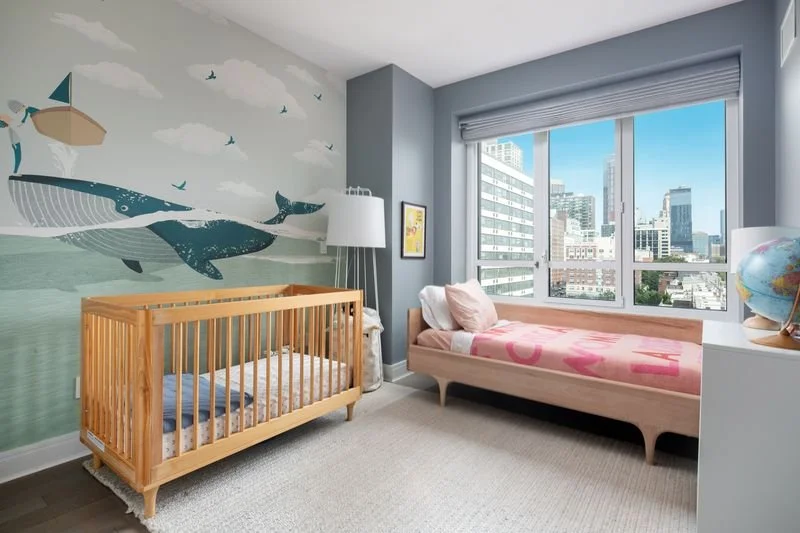How to properly repair a deck
The sun, rain, and general wear and tear all contribute to the deterioration of the wooden planks that form your deck. However, not all decking deteriorates in the same way. Some boards will inevitably show signs of wear early on, while others may hold up better over time.
This post will teach you how to spot troublesome deck boards and quickly remove and replace them without causing damage to the surrounding wood. Just as you make sure to do a good job on a clients deck also make sure you make the right choice of carpenters insurance for your carpentry work.
1. SEARCH FOR BAD DECK BOARDS
I typically commence any deck board replacement process by taking a careful stroll around the deck and inspecting each board individually. I search for a list of issues to solve:
Boards curling up at the edges
Long splits in the wood grain
Gouges and loose material
Weak points
I use a red or blue lumber crayon to mark any board that seems to be fractured or in much poorer condition than its counterparts. Lumber crayons are ideal because the marks are easily identifiable against the surface of the deck and can be readily removed. That way, you won't have a permanent mark on your deck if you change your mind or don't complete the project promptly.
2. DETERMINE THE TYPE OF WOOD AND CALCULATE THE FOOTAGE
Next, I determine what sort of wood was used for the deck. Deck planks typically take the form of treated 5/4 ("five-quarter") timber, which is 1 inch thick and 5-1/2 inches wide.
Some decks, however, are topped with frame lumber, usually 2x6. The width of this timber is the same as 5/4 deck boards, but it is 1-1/2′′ thick.
Be sure to measure the thickness of your deck planks at the edges (I've seen two-story decks with different types of wood on the top and lower levels.) You don't want to spend a lot of money and time hauling timber just to discover that you didn't order the correct thickness!
When you've figured out what kind of wood you're working with, take a stroll around the house and take approximate measurements of the boards you'd want to replace. I prefer to keep track of each and every board number. By doing this, I can often combine their replacements and save material and cost by using longer boards.
3. PURCHASE REPLACEMENT WOOD
Buy the replacement wood you need from your local lumberyard. Check the treated lumber–it gets roughed up in transit, and a lot of the boards will have visible scars and imperfections.
Also, look for boards with any large knots along the edges. These knots could be the start of a fracture. Check for large knot hollows on the undersides of the boards by flipping them over.
Finally, look for timber that doesn't have a lot of obvious wear. For the most part, you want boards that are long and straight. Small bows and curves can be churned out, but large bends over short distances are impossible to handle.
When loading lengthy timber into your truck, make sure the planks are "flagged.") If the boards are extending more than two feet over your rear bumper, use a roofing nail to clip a red plastic flag–often supplied by the lumberyard–into the back end of the boards. The law requires you to mark your cargo in this manner for the safety of automobiles coming from behind.
4. REMOVE THE EXISTING DECK BOARDS
Once you have sourced your planks, you can start removing your old boards. The boards can be relatively easy to remove with a pry bar. However, this approach could damage any of the nearby boards that you were planning on retaining.
As a result, I like to adopt a gentler approach. Before attempting to lift the board up, I remove the bulk of the nails that are keeping it in place.
If your boards were originally installed with screws, just remove the old screws. However, if your deck planks were nailed down (as most are), you'll have to gently pry the nails out.
This is done with a nail puller, sometimes known as a "cat's paw." Simply place the prongs of the cat's paw near a nail head (approximately 1/8′′ away) and hammer the strike point on the tool's other side. The prongs should gouge a hole in the wood and drive towards the nail.
The prongs will drop below the nail head and straddle the shaft of the nail, trapping it if done correctly. With a little push, pry the nail puller back, pulling the head of the nail out of the timber.
Simply use a hammer or pry bar to lift the nail the rest of the way out at this point. Repeat the technique for the remaining nails in the board (there will almost always be two nails side by side every 16′′-24′′). Place the nail safely in your tool belt or a nearby trash bag where no one may tread on it.
After you've removed the nails from approximately two-thirds of the board's length, carefully push up the free end and use the board's length as leverage to pull out the remaining few nails.
Set the board aside after hammering down any nails poking through the bottom side. Carry on with the process for the rest of your designated boards.
5. MEASURE DECK BOARDS FOR REPLACEMENT
By butting the end of your tape measure against the end of the following board up, you may measure any gaps where a board is missing. Check the mark on the tape where it ultimately crosses the existing board at the other end as you pull the tape across the vacant area. (It's easier to see this measurement from above.)
Subtract 1/8′′ from your total measurement. This will give the new replacement component some wiggle room to slip into position effortlessly.
6. CHECK OUT THE JOISTS
Clean the joists well before inserting the new boards.
Leaves, pine needles, and dirt can fall between the deck boards and accumulate on the structural joists' tops. Take advantage of the chance to clear this debris away so that your new boards can be placed on solid, clean foundations.
Examine your joists' general condition as well. Make sure there are no indications of decay on them. Because the deck structure is shielded from the sun by the boards above it, it often lasts much longer. As a result, joists should be in good condition.
7. CUT REPLACEMENT PIECES
Cut replacement parts to the lengths indicated on your list with a circular saw and a speed square. Because treated timber typically comes with ragged cuts on the ends, be sure to "square up" the ends of your boards first.
Also, make sure that any piece you're going to cut is propped up on a spare piece of timber. This will give the blade enough space to avoid cutting the deck or anything else underneath.
Pull and mark measures by attaching your tape measure onto the square end of the board, pulling out the tape blade, and making a little "V" mark where you want to cut. Draw a straight line across the tip of the V with your speed square.
Now, position your circular saw blade to cut this line in two (or as close to it as possible). At this stage, use your speed square as a guide to direct the rotating saw blade through the timber. Allow the waste lumber to securely fall away.
If the waste timber is particularly lengthy, it may be beneficial to lay another prop piece beneath it. Simply place the prop block close to the cut point so that the cut "opens up" and the blade does not become twisted.
8. ATTACH REPLACEMENT DECK BOARDS
All new components should be placed in the gaps where they will go to ensure that they fit properly. If they fit well, prepare to join them by pre-drilling two holes 1′′ from the board's sides at each joist site. (These holes can be aligned with nail or screw heads in nearby joists.)
Use exterior-grade screws. Make sure the screws are long enough to penetrate the joist below by at least 1-1/2 inches. By driving screws until the heads are just below the deck surface, you may "countersink" them.
When mounting deck boards, screws are usually preferred over nails since they do not loosen over time. Nails can lose their grip on the joist below, especially when the weather changes and the timber expands and contracts.
And that’s it!
Simply follow these instructions for the rest of your boards. It's possible that your new deck planks will stand taller than the ones around them. This is due to the fact that new treated timber is frequently still damp, but older boards have dried out completely. As the new boards dry out, they will most likely sink.
If you have any cut-off leftovers, place them beneath the deck out of the way. This way, if you ever need to replace more planks, you'll have the wood to hand. However, make sure they're piled atop bricks or cinder blocks. Even treated lumber can decay if left on the ground for an extended period of time!







